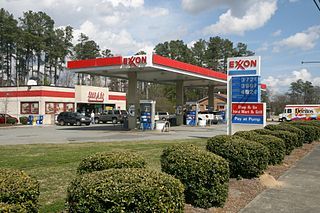From Guest Blogger Lizzie Weakly: Understanding the Sudden Decline in Gas Prices

For simplicity, gas prices are usually measured by the price of a barrel of oil. To put the situation into perspective, by October 2015, the price of a barrel of oil had been cut by about half since June 2014. This represented price levels not seen since the 2009 recession.
Over the past decade, barrel prices have been steady at around $90 to $100 a barrel. Currently, prices are hovering around $45. It is believed that it may be years before prices return to their long-established levels.
Why?
All of this is great, but you may still be wondering exactly why there has been a sudden drop in oil barrel prices. The answer is a complicated one with many variables and moving parts. There is no way to pin point one exact or one primary cause for the drop in gas prices.
To start, the United States’ domestic production of oil has doubled over the past six years. By simple economics, increased supply lowers prices. With increased American production, oil from the Middle East is finding itself sold less expensively in Asian markets.
Canada and Iraq have increased their production of oil, while Russia is still also a mainstay. As you may gather. It is largely an issue over the marketplace being oversaturated. The fact that many countries are trying to reduce demand for oil– usually to promote environmental agendas– has only further compounded the issue.
What This Means
Lower oil prices mean a number of things for both companies and the average consumer. First of all, gas prices are over $1 cheaper per gallon at the gas station. (The average price per gallon has fallen from $3.45 a gallon to $2.30 a gallon.) These price cuts have disproportionally assisted those with lower incomes.
Furthermore, heating oil, diesel, and natural gas prices have fallen significantly, all of which will help Americans save $750 on gas overall.
The decrease in oil prices is believed to stay for the coming years. This has benefits beyond just day-to-day car use. For example, it can make a road trip much more feasible.
Informational Credit:
The information for this article was provided by Fusion Resources LLC.

Oil companies are probably far less valuable than many people currently think they are!
1. There is likely to be a long period of low prices – possibly 3 to 5 years before a significant rise in oil price. Oil production is higher than demand and will remain so for some time – with record stockpiles of 3 billion barrels of oil.
Many producers are exploiting their existing wells – pumping as fast as they can to cover their operating costs, but may never recover the costs of exploration and drilling, or be in a position in the near future to set aside investment funds for future drilling. .
2. As the article says, numerous countries are deliberately working to reduce their oil consumption (or at least slow the growth of oil consumption) as a matter or policy so that we may have reached or be very close to peek oil demand.
3. Assuming we are going to collectively aim to keep warming to less than 2 centigrade higher than pre-industrial levels, 2/3 of known fossil fuel reserves needs to remain in the ground – or at least can’t be burned. (Some will probably continue to be used for chemical production etc.)
All told, a market that will soon stop growing and move into decline – combined with many producers in negative margins for years, and 2/3 of known reserves having effectively no value.
How long before the financial markets recognise that the proverbial brown matter (not oil) and the rotating air circulator are about to have a meeting?